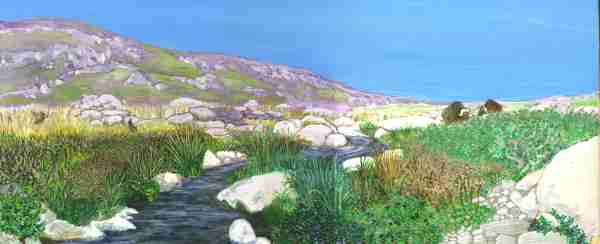Portfolio > The Quest for Food: Excerpts
|
Primate
Diets All illustrations by the author Ivan Crowe |
Sub-arctic HabitatFood resources of the sub-arctic
Illustration based on slides provided by John Letts
Most of the food available to people inhabiting sub-arctic regions is provided by birds, fish, sea mammals and the other animals they hunt. Flesh is often eaten raw. This not only helps to conserve the little fuel available but also avoids destroying the traces of vitamin C that fresh meat contains. In the brief summer though, a wide range of ground hugging plants allow sweet, succulent berries to be added to the diet. Carbohydrates were hard to come by, but the roots of a common tundra flower - the dandelion, which contain toxins - could be made edible by cooking and the leaves too can be eaten; although not all potential food plants were necessarily always utilised by native people Return to the top of the page |
||||||||||||||||||||||||||||||||||||||||||||||||||||||||||



